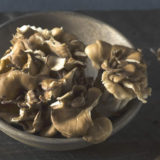

About this time each year the flu shot marketing machine steamrolls into the collective consciousness of Americans. Via every conceivable media outlet we are inundated with admonitions to protect ourselves from the flu or risk the dire consequences of infection.
What they don’t spend much time on is informing us of the perils that accompany this flawed approach to protection.
Here are the high points of what we should know but don’t:
- Flu shots don’t always work. The CDC estimates that the most recent vaccines reduce the risk of influenza by about 60%. That means that there is still a 40% chance of contracting the illness.
- According to the National Vaccine Information Center, “influenza vaccines are Category C drugs…and it is not known whether these vaccines can cause fetal harm when administered to a pregnant woman.”
- Adverse respiratory and allergic reactions result in thousands of emergency room visits each year for children receiving vaccine flu protection.
- The Advisory Committee on Childhood Vaccines – Division of Vaccine Injury Compensation acknowledges significant rise in the number of petitions for injury compensation due to flu vaccination since the introduction of trivalent and quadrivalent flu vaccines. The commission notes that the annual monetary awards for vaccine injury claims more than doubled from 2004 to 2010 and the trend toward increasing claims and awards was expected to continue.
- Influenza vaccines commonly contain many or all of the following potentially harmful ingredients, according to the CDC:
- Aluminum – a known neurotoxin that is thought to be associated with a higher risk of developing Alzheimer’s disease. Research into this connection continues.
- Antibiotics – used to prevent bacterial growth during production and storage. Can cause allergic reactions in the recipient.
- Egg/Chicken Protein – may lead to acquired protein intolerance and/or severe reaction in recipients whom are allergic to egg protein.
- Formaldehyde – a known carcinogen. Used to kill viruses or bacteria that may contaminate a vaccine during production.
- Monosodium Glutamate (MSG) – used as a stabilizer. It is associated with arrhythmias, depression and mental confusion.
- Thimerosal – still used in many flu vaccine formulations as a preservative. While the CDC classifies the low amounts in vaccines as safe for human exposure, previous studies have shown that thimerosal significantly increases the risk of autism, speech disorders, mental retardation and other neuromusculoskeletal abnormalities
- Common side effects of the flu vaccine such as nasal congestion, runny nose, sore throat, fever and other flu-like symptoms are unpleasant though temporary. More serious reactions, though uncommon, can be life-altering or deadly:
- Narcolepsy – a neurological disorder associated with uncontrollable, frequent, sudden sleep episodes and sleep paralysis.
- Anaphylaxis – allergic reaction that can be deadly without emergency treatment.
- Bell’s Palsy – temporary paralysis of facial muscles. Usually one-sided.
- Guillain-Barre Syndrome – a neurological autoimmune disorder that results in total body paralysis. There is no known cure but treatments exist to ease symptoms and shorten duration. Most sufferers recover but may experience some lingering effects.
- Delayed vaccine injury. Most concerns and statistics regarding vaccines are related to immediate or short-term reactions to the drug. However, some consideration should be paid to the potential for long-term risk of diseases like cancer and Alzheimer’s disease that have been linked to constituents of these vaccines that are injected directly into the bloodstream, bypassing all of the body’s front-line immune defenses.
It is important to note here that these disturbing, even terrifying, side effects are rare. Nonetheless, consumers have a right to know that these potentialities, however uncommon, do exist so that they may make an informed decision about flu protection. It is equally important that we are aware of the following natural alternatives to flu protection exist, allowing us to take control of our healthcare by making an informed choice on treatment.
Vaccine-Free Flu Protection
An effective program to minimize your risk of seasonal flu is primarily a matter of making these simple lifestyle choices:
- Eat Healthy – fresh, whole foods cooked at home provide your body the nutrients it needs to maintain a healthy immune system.
- Regular Exercise – sweating and sustained heart-rate elevations during exercise promote healthy cells and immune function through better circulation and more effective toxin removal.
- Drink Water – every cell in the body requires adequate hydration to function properly, including the immune system. Drink half your body weight in ounces of pure, clean water every day.
- Get Adequate Sleep – your immune system requires the restorative powers of sleep in order to function effectively. Our circadian rhythms dictate that the hours between 10pm and 6am are when we get our most productive sleep.
- Wash Your Hands – regular hand-washing with soap and hot water will go a long way toward helping you avoid a dose of the flu from germs you picked up on doorknobs, bannisters and the credit card stylus at the local store. In a pinch, use an instant hand sanitizer if you can’t wash. This is most important before eating.
- Don’t Touch Your Face – if you keep your fingers out of your mouth, eyes and nose, those flu germs have a hard time getting in.
Flu-Hating Nutrition
Along with good nutrition, there are certain nutritional supplements that have been proven effective in flu prevention and treatment:
- Vitamin D3 – the gold standard in supplemental flu protection. Vitamin D3 is a natural, potent antiviral and anti-bacterial substance. It also acts as a very effective dampener of the inflammatory processes that complicate the flu and lead to pneumonia. The Vitamin D Council recommends a minimum dosage of 35 IU per pound of body weight per day during flu season. So, a 140-pound person would take about 5,000 IU per day.
- NAC Plus – has potent antioxidant and mucolytic (breaks down mucus in the respiratory tract) effects, and has been shown to significantly reduce the likelihood and severity of having flu symptoms.





If there are so many potentially invasive ingredients in such vaccinations, why do doctors’ office encourage and distribute flu vaccinations?
why? why do they prescribe numerous drugs instead of looking for a cause and getting to the root of a problem? why do they use chemo and radiation? it is money, Drs are not about healing anymore they are about treating symptoms and quite simply put, they are in it for the money not the patient for the most part. I am 56 and have not had the flu since I was 18 – We have become sheep to the system and have quit studying and researching the facts for ourselves. Perhaps this is just my opinion, or perhaps I am speaking the truth. Believe what you will, logic and facts rule out at the end of the day.
I do not wish to be forced to take a shot or pill that is not, in fact, going to do me any good and could actually harm me. It should be a matter of choice, you make your choice I make mine, I am not a fear mongerer I am a realist.
Vaccines have been proven effective and thank goodness we have them. Because of misinformation
and fear mongering, diseases that were basically irradicated are now on the rise again.This includes very serious diseases such as TB and polio. I’ve had influenza only once in my life, and I’m 46. Thanks to the flu shot.
I have had the flu once before there were vaccines, I built up antibodies and I prefer to fight something naturally with preventative measures. I do want to have a flu shot ever, I have opted out in the work place with the knowledge that I might have to sit out some shifts, but I never have had to. Vaccines can kill and do kill – some people – tiny babies have nearly died but luckily their mothers and grandmothers walked the floor and got them past the critical part of the reaction. Did you ever wonder what crib death is? Just curious why people blindly and implicitly trust the pharmaceutical companies that push all these drugs and immunizations, we are an over immunized society and it is causing health issues the clinics are overflowing and you cannot get in to see a Dr. why? it was not this way when I was a child the only time we were in the Dr was if we were bleeding to death or needed a physical exam for some reason, like college
people tend to forget objectivity and facts when it comes to this topic and become very subjective. I don’t know where you live but overflowing clinics are not something I’ve ever seen. Lol! But then again, I haven’t been to one in a couple years.
oh, and by the way maddameselfly, I am quite familiar with crib death. If you think it has anything to do with vaccines, you should really do some research.
Don’t expect perfection when it comes to medications.
I just try to stay rational and think things through. Research-Pros-Cons
I got my flu shot months ago and I’m glad a took it.
The suggestions in the article on how to reduce your risks of getting sick are good to follow. However, please don’t allow fear to take over your GOD given mind.
In July 1999, although it had been used safely since the 1930s, thimerosal was removed or at least reduced in immunizations. The previous studies mentioned above were actually unfounded.
If formaldehyde was used in processing, it is removed prior to distribution. Please read peer-reviewed information on all these and especially how diseases were eradicated due to heard immunity.